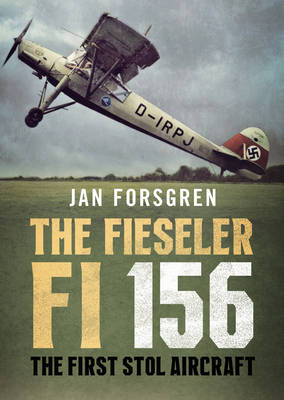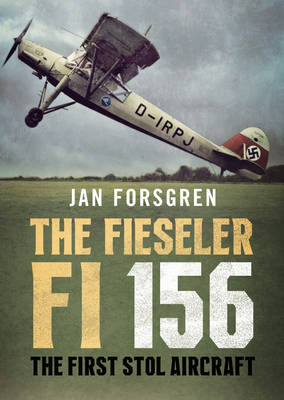
Je cadeautjes zeker op tijd in huis hebben voor de feestdagen? Kom langs in onze winkels en vind het perfecte geschenk!
- Afhalen na 1 uur in een winkel met voorraad
- Gratis thuislevering in België vanaf € 30
- Ruim aanbod met 7 miljoen producten
Je cadeautjes zeker op tijd in huis hebben voor de feestdagen? Kom langs in onze winkels en vind het perfecte geschenk!
- Afhalen na 1 uur in een winkel met voorraad
- Gratis thuislevering in België vanaf € 30
- Ruim aanbod met 7 miljoen producten
Zoeken
€ 34,95
+ 69 punten
Omschrijving
First flown in May 1936, the Fieseler Fi 156, or, as it was better known, Storch (Stork), was designed in answer to a request from the German Luftwaffe for a short range reconnaissance aircraft. For its time, the Fi 156 had amazing performance and flight characteristics, what today is known as STOL (Short Take Off and Landing). It could take off from a lawn considerably smaller than a football field. During the Second World War, the ubiquitous Storch was the airborne eyes of the German Wehrmacht (Army), also being used on daring rescue missions, including the rescue of the Italian dictator Mussolini. The last flight out of Berlin was made in a Storch. Many were sold to Germany's allies, while one was used by Churchill after D-Day to observe the progress of the invasion. Others were used by the RAF as squadron 'hacks', with one being flown off an aircraft carrier. The STOL concept was copied by many countries, including France, Japan and the USSR. Post-war, production continued in Czechoslovakia, France and Romania, with more than 3,000 being built. Some are still flying.
Specificaties
Betrokkenen
- Auteur(s):
- Uitgeverij:
Inhoud
- Aantal bladzijden:
- 208
- Taal:
- Engels
Eigenschappen
- Productcode (EAN):
- 9781781558133
- Verschijningsdatum:
- 23/03/2021
- Uitvoering:
- Hardcover
- Formaat:
- Genaaid
- Afmetingen:
- 173 mm x 249 mm
- Gewicht:
- 680 g

Alleen bij Standaard Boekhandel
+ 69 punten op je klantenkaart van Standaard Boekhandel
Beoordelingen
We publiceren alleen reviews die voldoen aan de voorwaarden voor reviews. Bekijk onze voorwaarden voor reviews.









